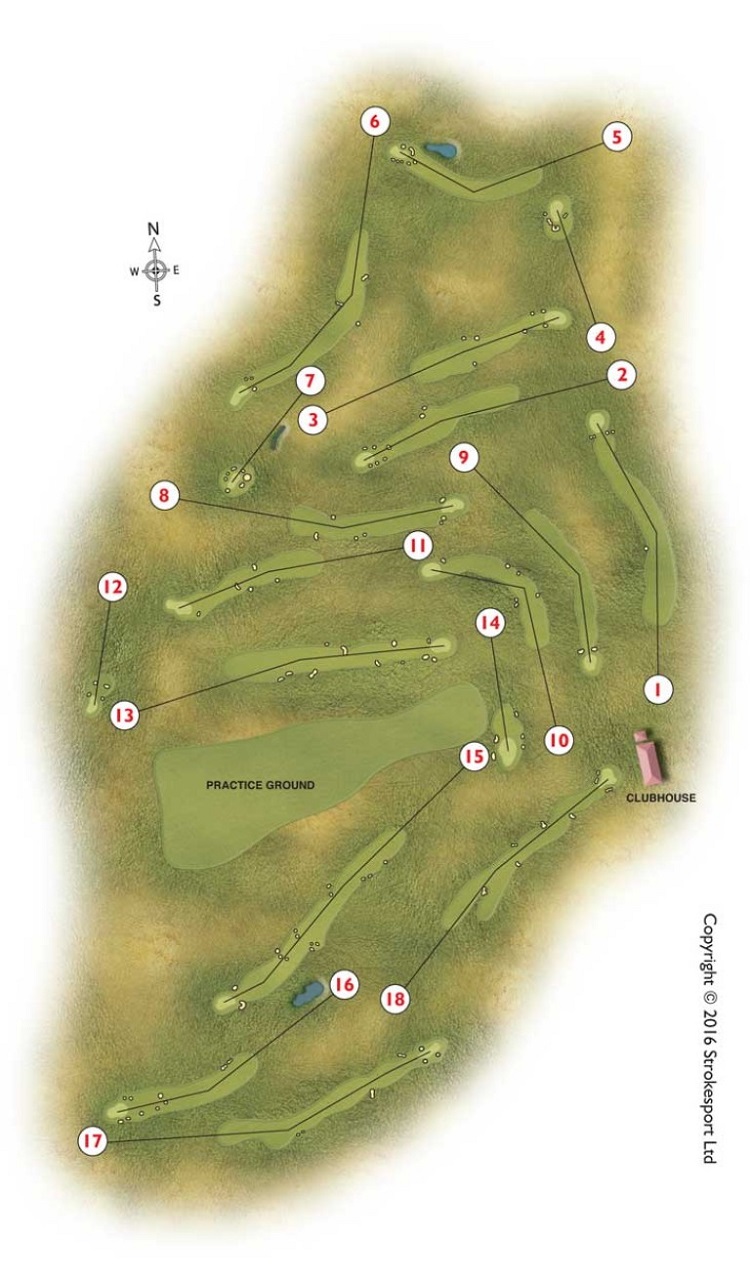It’s just over a fortnight to the start of the oldest major golf tournament in the world as a 156 strong field of competitors head to the Par 70 Royal Birkdale course in Southport, Merseyside to attempt to win the 146th Open Championship.

Last years’ tournament held at Royal Troon saw victory claimed by Swede Henrik Stenson who won on a memorable last day in Scotland. American Phil Mickelson finished second with an open-equaling record of 17 under par, but Stenson rewrote history by finishing an amazing 20 under par to win his first ever major title.
There will be a 156 strong field of competitors taking to the fairways and greens with the winner of the tournament picking up the famous Claret Jug and a cool £1.2 million, which is in stark contrast to the first ever tournament in 1860 when Scotsman Willie Park Snr took home no monetary prize at all (just the Challenge Belt). In fact it wasn’t until 5 years later that Tom Morris Snr took home the lofty sum of £6.
As well as last year’s winner Henrik Stenson the field features both winners from the years previous 2 majors – US Open winner American Brooks Koepka, and the ever-popular Spaniard Sergio Garcia who claimed the Masters back in April, as well as the World Number 1 American Dustin Johnson, as well as 16 other winners of the Open, going back to Scotsman Sandy Lyle who won the tournament back in 1985.

Fans packing the course hoping for a British or Irish winner come Sunday can have their hopes raised by the fact that there have been 9 winners in the last 31 years.
And as a useless fact did you know that the first 29 Open Championships were only won by Scotsmen?
This will be the tenth time that Royal Birkdale has hosted The Open stretching back to 1954 when Australian Peter Thomson Arthur emerged victorious, followed by American legend Arnold Palmer in 1961. In fact the first eight winners were either Australian or American – that streak was finally broken the last time it was held there when Irishman Padraig Harrington came out on top.
Situated on the golden links of the North West coast in Southport, Royal Birkdale is possibly the finest of all courses in England. Royal Birkdale has held more Championship and International events since World War 2 than any other course in the world. Open Championships, Ryder Cups, Women's British Opens, Senior Opens, Amateur Championships, Walker Cups and Curtis Cups.
Royal Birkdale Golf Club has been voted the number one golf club in England, one of the top five clubs in the UK and amongst the top 35 in the world.

The Holes of Royal Birkdale
Out
Hole 1 – Par 4 – 450 Yards
A tough opening hole, often rated as one of the most difficult holes on the course. An accurate tee shot is vital in order to have a chance of attacking the pin, which is a very demanding shot to say the least.
Hole 2 – Par 4 – 421 Yards
A slight dog leg left played into the prevailing wind with two bunkers on the right of the fairway. The green is well protected by the bunkers and rough banks.
Hole 3 – Par 4 – 451 Yards
The drive needs to favour the left side of the fairway to give a clear second shot to the green but with two bunkers on the left this requires the most accurate of drives. Bunkers protect the green and the re-contoured surround will leave a challenging recovery from any wayward approach.
Hole 4 – Par 3 – 201 Yards
A well-bunkered green does not gather the ball on this, the longest of the par threes on the course. It measures 200 yards exactly and is played from an elevated tee to a green some 30 feet below in the lowest section of the course.
Hole 5 – Par 4 – 346 Yards
A dog leg left to right and the first real risk/reward hole on the front nine at 343 yards the green is not reachable but the longer hitters may wish to ‘take on’ the dog leg and play across the corner of deep rough and small pond to the right of the hole.
Hole 6 – Par 4 – 499 Yards
The drive must avoid the bunkers on each side of the fairway. The hole requires a long second shot to an elevated green protected by bunkers to the front and surrounded by dunes. The green is large and well contoured with various difficult pin positions.
Hole 7 – Par 3 – 178 Yards
This hole requires a firm shot over some rough country to an upturned saucer shaped green closely protected by pot bunkers. The 7th is the shortest of the par 3’s at 177 yards and requires a well-struck shot to a small target.
Hole 8 – Par 4 – 457 Yards
The bunkers flanking the fairway demand a very accurate drive, and then the second shot is played to quite a large green protected by deep bunkers. The putting surface has some very deceptive borrows.
Hole 9 – Par 4 – 414 Yards
The semi-blind tee shot needs to be placed correctly to find the fairway. The green is slightly elevated making club selection important, the bunkers at the front will gather anything short and there is lots of trouble over the back.
In
Hole 10 – Par 4 – 408 Yards
The fairway bunkering requires a well-placed drive to open up the green to this relatively short par four. Longer hitters may take a driver to clear the hazards but deep rough lies to the left and any shot landing behind the sand may run out of fairway ahead.
Hole 11 – Par 4 – 436 Yards
This hole demands accuracy from the tee and for the second shot. The green is well contoured and the pin positions make the landing area on the green quite small and club selection is vital.
Hole 12 – Par 3 – 184 Yards
A very attractive short hole, long enough to make the green look quite tiny. Deep bunkers and banks of rough grass protect the target. The hole is the 3rd par three and is one of the finest holes on the course due to the subtle contouring and extremely small target in the distance.
Hole 13 – Par 4 – Yards 499
This is a testing hole made difficult by the bunkering at drive length. It requires a long and accurate tee shot to allow a second shot to reach a beautiful green with its background of tall sand hills. Most will probably need a good short game to get up and down for par.
Hole 14 – Par 3 – 201 Yards
This is the last of the par three’s on the course, played from an elevated tee which is protected from the prevailing wind. The green surround has several deep bunkers waiting to collect any misdirected shot.
Hole 15 – Par 5 – 544 Yards
The longest at 544 yards and features 15 bunkers to be avoided, although most of these are on the fairway. Any putt from behind the hole will be one of the quickest of the round and will break a little more than first expected.
Hole 16 – Par 4 – 439 Yards
This hole demands a long carry over some very rough ground. The second shot is played to an elevated green that is well protected by very deep bunkers and hollows.
Hole 17 – Par 5 – 572 Yards
Drives have to be hit between two large sand dunes avoiding the two bunkers on the right of the fairway. With the ground here firm the correct drive will normally get some run, shortening the hole. The two-tier green is well protected with hazards both left and right.
Hole 18 – Par 4 – 473 Yards
This excellent finishing hole for the Open Championship is a long par four, with Out Of Bounds to the right of the tee and a long second shot to a well-bunkered green. Putting out in front of the iconic Art-Deco style clubhouse is almost second to none as an experience and a wonderful closing act to a severely challenging but all in all fair test of championship standard golf.
Total Par 70 – Total Yards 7173
*In the event of a tie 4 play off holes will be played over the 15th, 16th, 17th, and 18th holes.
The Open runs from the 20th July till the 23rd and can be seen on Sky Sports. For more information please head to the official website here.
